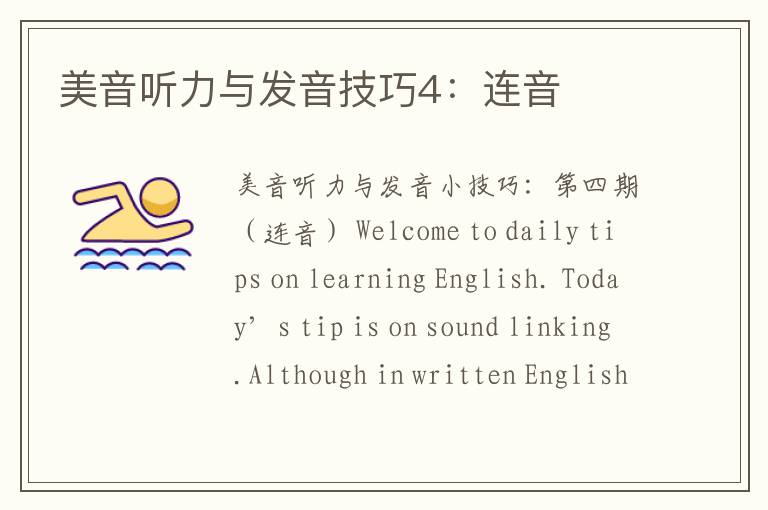
美音听力与发音小技巧:第四期(连音)
Welcome to daily tips on learning English. Today’s tip is on sound linking.
Although in written English, there’re spaces between every word, in spoken English there’re always never (1)pauses between words. In order to understand spoken English, it is (2)essential to understand how this linking is done. Today let’s (3)concentrate on the most common sound linking situation. Whenever a word ending in a consonant sound is followed by a word beginning with a vowel sound, the consonant sound is linked to the vowel sound as if they were part of the same word.
Let’s look at some examples. I’d like another bowl of rice, please. First, note that although there’re six words in the sentence, all the words are linked together without pause. Listen again. I’d like another bowl of rice, please. Now listen to how the words “like” and “another” are linked. “Like another”, “like-another”. “Like” ends in a consonant sound, and “another” begins with a vowel sound. So the “k” from “like” is linked to the “a” from “another” to produce “kanother”. Listen to the example sentence again. I’d like another bowl of rice, please. In the sentence there is another example of a consonant being linked to a vowel. A bowl of, a bowl-of. It sounds like that you’re saying the word “love”. Here’s another example. I’d love a bowl of rice. I’d love a bowl of rice. This sound linking is probably the biggest problem for learners of English when they try to understand native speaker’s talking. We’ll talk more about sound linking in future daily tips, as this is an extremely import feature of spoken English. Today’s tip is to link consonants to vowels which come after them. Till then, tomorrow, for another daily tip.
--由英语编辑